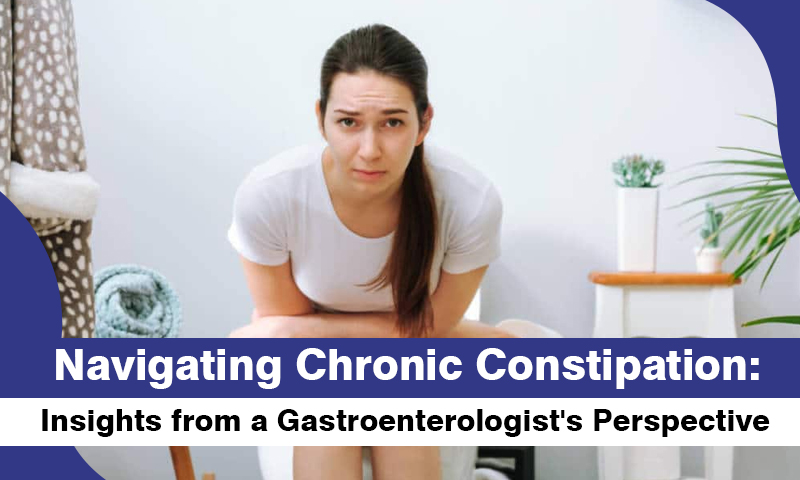Gas and Abdominal Bloating: Role of h2 Breath Test

What is Endosonography & Endoscopic Ultrasound?
October 14, 2021
Non-Alcoholic Fatty Liver Disease (NAFLD) and Non-Alcoholic steatohepatitis (NASH)
October 19, 2021Abdominal bloating is characterized by the subjective symptoms of trapped gas, abdominal pressure, and fullness. In contrast, abdominal distention reflects an objective physical transition of abdominal girth.
These dual issues are commonly encountered, with a prevalence in the general population ranging anywhere from 16% to 31%. In patients with irritable bowel syndrome (IBS), it may be in the range of 66%-90%. They're also more common in patients with constipation and in women.
The impact of bloating and abdominal distention upon the quality of life is striking. Approximately 75% of patients with bloating report their symptoms as moderate to severe, and 50% say that this causes a reduction in their ability to have daily activities of normal function. Usually, patients who present with these symptoms often tell me they feel like they're pregnant or have a balloon in their abdomen and just can't stand it.
Abdominal distention and abdominal bloating don't always go hand in hand. Only about 50%-60% of patients with bloating report distention.
What Causes These Conditions?

When it comes to the underlying pathophysiology, most patients believe their symptoms are caused by their body making too much gas. This is true in only a minority of patients. It's not caused by an increase in gas so much as it is an increase in sensation.
The major pathophysiologic contributors to these conditions are small intestinal bacterial overgrowth as well as carbohydrate intolerance, the latter of which is particularly influenced by lactose and fructose intolerance.
Lactose deficiency by itself does not necessarily cause malabsorption, and not all individuals who are lactase deficient become symptomatic after ingesting lactose. Instead, symptom generation in some patients may require additional factors such as genetic predisposition or visceral hypersensitivity.
Pathogenesis may also be influenced by an altered microbiome, which is an effect we're seeing across almost all disease states. The role of the gut microbiome is causing changes in gastrointestinal (GI) motility, sensation, or permeability has a profound effect in producing these symptoms of abdominal bloating and distention.
Abdominal bloating is common in patients with abnormal GI motility. We see this particularly in patients with gastroparesis, in whom the prevalence can be in the range of 50% or more.
It's similar in patients with pelvic floor dysfunction. Such patients with established anorectal motor dysfunction can have problems in evacuating stool. Pelvic outlet obstruction can also contribute to increased delays in colonic transit.
Another associated syndrome, which you may not have considered, is called abdominal-phrenic dyssynergia. This is a paradoxical response whereby the diaphragm contracts when pushing things down and the abdominal wall relaxes. What you would normally expect to see is the abdominal muscles contract and the diaphragm relaxes in order to maintain the integrity of the craniocaudal capacity to avoid distention. Reversing this can lead to the symptoms of bloating and abdominal distention.
There's also a clear causality for visceral hypersensitivity. This can be magnified by both complex brain-gut neural interactions and factors such as anxiety, depression, somatization, and hypervigilance. A lot of these conditions are also impacted by sleep, which is something that's being discussed more often as of late. Sensory thresholds are all lowered in the presence of sleep fragmentation, which in turn heightens visceral hypersensitivity.
Making the Diagnosis
Breath tests are a very easy diagnostic tool for assessing bacterial overgrowth. We have lactose and fructose breath tests and the more common glucose and lactulose breath tests. These tests are commercially available and easily obtained.
We also must not forget to consider celiac disease, given its prevalence. Serologic testing is appropriate when this disease is suspected.
Upper endoscopy and abdominal imaging are warranted when a patient has alarm features. Gastrointestinal motility–related changes and gastroparesis conditions should also be considered.
Anorectal motility is the best testing option for patients with suspected pelvic floor dysfunction, perhaps in combination with defecography.
A Range of Treatment Options
When it comes to treatments, we first like to consider dietary interventions. We recommend taking a good diet history to assess for bloating and distention.
The use of artificial sweeteners is a very common cause of these symptoms. These sweeteners contain non-fermentable carbohydrates. Such carbohydrates are fermented in the gut and lead to an increase in gas.
We should also consider the impact of carbohydrates in fructans and FODMAPs (fermentable oligo-, di-, and monosaccharides), which may significantly increase the osmotic load.
A lot of patients worry about the role of gluten. About 70% of patients considered to have non-celiac gluten sensitivity report bloating. But it's not necessarily gluten causing this so much as it is the gluten products, particularly wheat and barley, fructans, and FODMAPs. Reducing those from patients' diets may be a very helpful way of addressing their symptoms of bloating and distention.
We should also remember that carbohydrates may slip into diets through the use of high-fructose corn syrup.
Probiotics have not been shown to have much effect on alleviating symptoms.
Antibiotics have been shown to be effective at treating bloating, particularly in the form of rifaximin at 550 mg three times daily for 14 days, but it remains difficult to get authorization to pay for this unless it's for a patient with IBS and diarrhoea.
Antispasmodics are a reasonable option, perhaps combined with simethicone.
Secretagogues are another option if you are a patient with constipation, as you can increase stool transit.
A variety of alternative therapies also exist. Peppermint oil is something that's good to try, given that there's very little downside. In those with abdominal diaphragmatic distention issues, biofeedback treatment may be quite helpful. There is also some evidence that hypnotherapy can lead to some improvement.
It's really a matter of taking advantage of what's available locally and is best for your patients.
Step-by-Step Summary
Step 1: To manage bloating and distention is to identify the underlying aetiology, which will help pinpoint where you go with diagnostic tests.
Step 2: Be aware of warning signs and symptoms that warrant additional, further directed testing, whether it is breath testing or perhaps even invasive testing.
Step 3: Assess the diet and medication use, surgical conditions, and behavioural factors that may be contributing to the pathogenesis.
Step 4: Take the pathophysiologic findings that you suspect and then initiate specific treatments, be it dietary interventions for carbohydrate intolerance or FODMAP alternatives, behavioural therapy, anxiety or sleep medications, or other interventions.
Hopefully, this blog has provided you with some insights on how to address abdominal bloating and distention, which is not only very commonly encountered by providers but also very frustrating for patients.
If you are facing any serious or extreme gas or stomach bloating, visit our team of Expert Gastroenterologists - Dr. Chirayu Chokshi, Dr. Dhaval Dave, Dr. Darshak Shah & Dr. Jaydeep Patel for the best in the town treatment related to Gastric Problems. For more information, visit our website www.gastrovadodara.com or call us on 9081333897 / 9825795257 to book an appointment.


